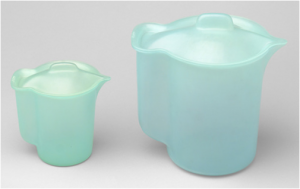 This weekend I did the PechaKucha 20×20 for the first time, joining a worldwide phenomenon where PowerPoint meets stand-up. If you’ve lived long enough in these times, you’ve experienced that dreadful state known as Death-by-PowerPoint. You wonder if the mind-numbing presenter ever heard that having slides makes the audience expect images, not this:
This weekend I did the PechaKucha 20×20 for the first time, joining a worldwide phenomenon where PowerPoint meets stand-up. If you’ve lived long enough in these times, you’ve experienced that dreadful state known as Death-by-PowerPoint. You wonder if the mind-numbing presenter ever heard that having slides makes the audience expect images, not this:
- Bullet point 1 <presenter reads words on the slide>
- Bullet point 2 <ditto, and you have already read to the end>
- Bullet point 3 <ditto, and you are mentally elsewhere>
In PechaKucha, the presenter has a hand-held mic instead of a podium, and the 20 slides are up for 20 seconds each. Two architects started the format in Tokyo 11 years ago to get creative ideas out of the board room and into the bar room, out of the conference and into the coffee house. My debut PechaKucha Night was at Volta Coffee & Tea, and I talked Tupperware to a lively audience of students and professionals from my community. I enjoyed presenting as much as I did listening to other participants talk about all manner of thing: from faux history to hard science, from swing aerial dancing to spider hunting in Peru. The poetics of PechaKucha are still emerging. But the form takes us beyond the usual suspects of point/illustration, image/caption and image-text. It’s more intimate than a conference, and more scintillating than comedy. Here are some of my slides & talk for “It’s a Boy! It’s a Girl! It’s…Tupperware!” I drew my PechaKucha from my “Desperate Domesticity” course on the American 1950s, and from a more recent team-taught course on Materials Science Engineering and Society. Enjoy.

8. Tupperware’s first big success was not with housewives, but with design columnists and art critics. Tupperware became a museum object with modernist values. Male art critics saw Tupperware as a “pure commodity” with “chaste lines” and “restrained dignity.” For them, it redeemed the vulgarity of suburbia and plastic. It made the MoMA!

9. Tupperware combines utility and beauty. Earl Tupper found the right balance of temperature and pressure to mold shapes to a suitable thickness. He also found a way to dye translucent products in pastel colors. Tupperware is tech-y and pretty, STEM and femme.

11. Just how tough is Tupperware? Well, you can ask Uncle Rico from Napoleon Dynamite! He’s a Tupperware Man. Lance, you look like a strong young pup. Why don’t you see if you can give that a nice tear?

13. The First Lady of Tupperware did things differently. Brownie Wise would fill a Wonder Bowl with colored liquid. She’d toss it across someone else’s fresh-cleaned rug, astonishing women with that airtight seal. For Brownie, doing business meant throwing a party. -MB
Sources:
Museum of Modern Art
Alison J. Clarke, Tupperware: The Promise of Plastic in 1950s America (1999)
Napoleon Dynamite (2004)